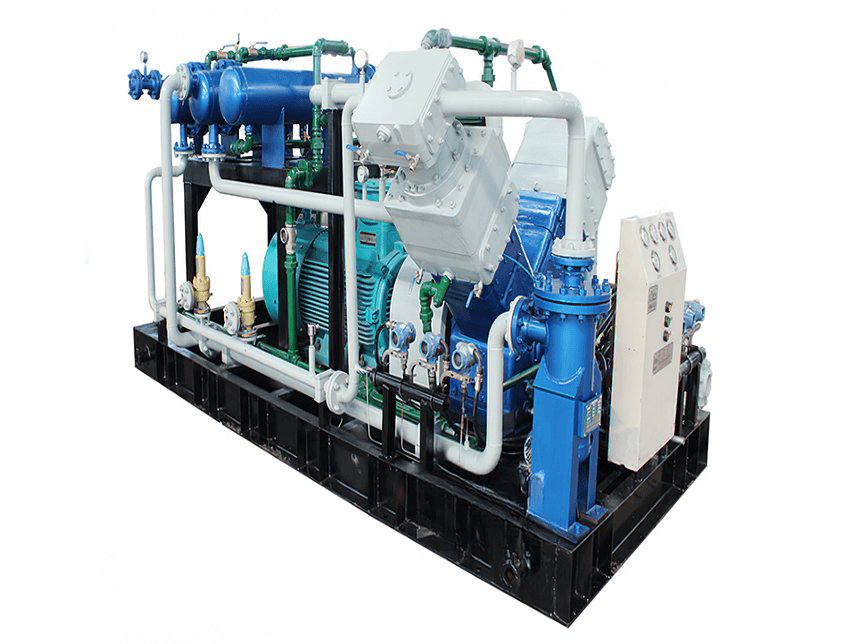【男生女生一起愁愁愁电视剧在线观看安徽官网】最新入口
-

Types and features of Ammonia Compressors
Jul 24, 2024 -

CNG Standard Station Compressor Types And Price Ranges
May 29, 2024 -

Components and maintenance of a boil-off gas compressor
Jun 23, 2024 -

How to choose the appropriate parameters for a mixed gas compressor?
Jun 09, 2024 -

The compression of industrial nitrogen and the application industry of nitrogen compressors
Jul 18, 2024 -

Characteristics and corresponding applicable industries of different types of natural gas compressor
Jul 11, 2024
男生女生一起愁愁愁电视剧在线观看安徽官网【乾坤易变】May 01, 2024
by:Anhui Shengnuo Compressor Manufacturing Co.,Ltd
Follow Us:
Casing gas refers to the natural gas that is present in the annular space between the well casing and the production tubing in an oil or gas well. When a well is drilled and completed, it is typically lined with a casing, which is a steel pipe that provides structural integrity and prevents the wellbore from collapsing. Inside the casing, production tubing is inserted to facilitate the flow of oil or gas to the surface.

【男生女生一起愁愁愁电视剧在线观看安徽官网】注册登录
1. Reservoir Gas: Casing gas can come from the same hydrocarbon reservoir that the well is producing from. It occurs when the formation pressure exceeds the pressure exerted by the hydrostatic column of fluid in the wellbore, causing the gas to migrate into the annular space between the casing and production tubing.
2. Gas Migration: Casing gas can also result from the migration of gas from other formations into the annular space. In some cases, there may be multiple hydrocarbon-bearing formations that are connected underground, allowing gas to migrate from one formation to another and accumulate in the casing annulus.
3. Formation Fluids: Casing gas may include not only natural gas but also other fluids, such as water or condensate, that are present in the reservoir. These fluids can also migrate into the casing annulus along with the gas.
【男生女生一起愁愁愁电视剧在线观看安徽官网】平台地址
Advantages:
- Casing gas can provide additional energy to enhance the production of oil or gas from the well. The gas can contribute to maintaining reservoir pressure, which helps in sustaining production rates and maximizing recovery.
- Casing gas can serve as a valuable resource when properly captured and utilized. It can be used for fueling on-site equipment or for other industrial purposes.
Challenges:
- Casing gas can create operational and safety concerns. If not properly managed, it can lead to well control issues, such as increased casing pressure or gas kicks during drilling or production operations.
- Casing gas may contain impurities or contaminants, such as hydrogen sulfide (H2S) or other harmful gases, which require appropriate handling and treatment to ensure worker safety and environmental compliance.
- The presence of casing gas can complicate well testing and measurement of the oil or gas production rates, as it needs to be accounted for and separated from the produced fluids.
【男生女生一起愁愁愁电视剧在线观看安徽官网】娱乐全站
1. Gas Lift: Gas lift is a common technique used to manage casing gas. In gas lift operations, gas is injected into the production tubing, either continuously or intermittently, to reduce the hydrostatic pressure exerted by the fluid column and facilitate the flow of oil or gas to the surface. This gas can be sourced from the casing annulus, effectively utilizing the casing gas to enhance production.
2. Gas Separation: Casing gas often needs to be separated from the produced fluids to accurately measure and allocate the oil or gas production. Gas separation equipment, such as separators or scrubbers, is used to remove the gas from the liquids. This allows for proper measurement and handling of the gas and liquids separately.
3. Gas Handling and Treatment: Casing gas may require treatment to remove impurities or contaminants before it can be utilized or safely vented. For example, if casing gas contains hydrogen sulfide (H2S), a toxic and corrosive gas, it needs to be treated through processes such as sweetening or scavenging to reduce H2S concentration to acceptable levels.
4. Gas Utilization: Casing gas can be utilized as a valuable resource. Instead of venting or flaring the gas, it can be captured and utilized for on-site operations, such as fueling engines or generators. This can help reduce operational costs and environmental impact by minimizing waste and utilizing the energy content of the gas.
5. Monitoring and Control: Continuous monitoring of casing gas is important to ensure proper management and identify any operational issues. Pressure gauges, flow meters, and gas composition analyzers can be installed to monitor the casing annulus and detect changes in pressure, flow rate, or gas composition.
6. Regulatory Compliance: Casing gas management must comply with local regulations and environmental guidelines. This includes adhering to specific requirements for gas handling, emissions control, and safety measures to protect workers and the environment.
7. Well Integrity: It is crucial to maintain the integrity of the well casing and production tubing to prevent gas or fluid leaks between the annulus and the wellbore. Proper well construction techniques, including cementing and casing integrity testing, are employed to ensure the integrity of the well and minimize the risk of casing gas migration or leakage.
To manage casing gas, various techniques can be employed, depending on the specific well and reservoir conditions. These may include installing gas separation and handling equipment, implementing downhole or surface gas lift systems, or capturing and processing the gas for commercial use or reinjection into the reservoir. The approach taken depends on factors such as the gas flow rate, composition, economic viability, and regulatory requirements.
【男生女生一起愁愁愁电视剧在线观看安徽官网】体育直播

Hi! Welcome back.
How are you doing?
Let s talk! We’ll provide the perfect solution for you!

Since its establishment, ASC Compressor has focused on comprehensive solutions for Oilfield industry, CNG/LNG industry, Environmental protection, and Industrial compression. It has excellent quality in designing, researching, producing and manufacturing.
- Quick Link > Home > Products > Applications > News > About > Contact
-
Contact Us
- E-Mail: [email protected]
- Tel: +8618098536798/+86(0)5633698699
- Fax: +86(0)5633698699
-
Address:
No. 17 Xingye Road, Economic Development Zone, Xuanzhou District, Xuancheng City, Anhui Province, China

















